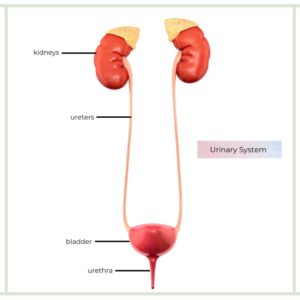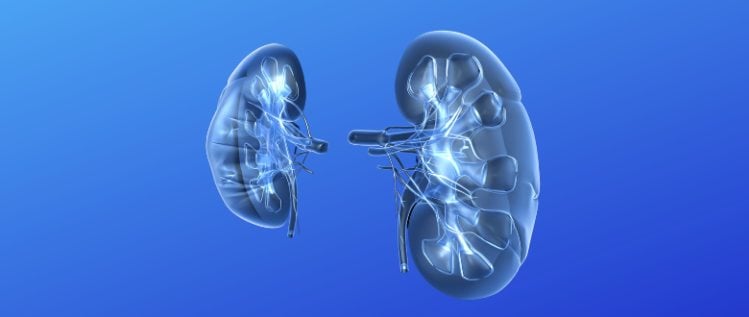Nina Uppal was informed during an anomaly scan at 20 weeks that she has antenatal hydronephrosis, a condition in which the fetus’ kidneys swell up because of fluid retained within them.
Anxious about her baby’s well-being, she asked her doctor about the condition.
What is antenatal hydronephrosis?
Antenatal or fetal hydronephrosis is a common condition that occurs in 1-5% of pregnancies. It can be detected through an ultrasound around the 20th week, as the kidneys appear bigger than normal.
In most cases, the condition resolves itself either in the third trimester or shortly after birth. In a few cases, however, infants may have to be referred to pediatric nephrologists, who are specially trained to manage the urinary system in children.
The doctor explained the urinary system, “We each have two kidneys, and tubes that carry the urine (called ureters) from the kidneys to the bladder, where the urine is emptied out through another tube called the urethra.”

“The function of the kidneys is to filter out the waste matter or urine. When the kidneys malfunction, however, the fluid accumulates in the kidneys, thereby causing them to enlarge.”
“The fetus’ urine is a primary component of the amniotic fluid in the womb; but a lower amount of urine produced could translate into low levels of amniotic fluid (oligohydramnios).”
“This is why you may need more tests to assess whether the antenatal hydronephrosis is associated with any other conditions. “
Understanding that Nina and her husband had multiple concerns around the condition, the gynecologist asked Dr. Anunaya Katiyar, Pediatric Nephrologist at Sitaram Bhartia, to counsel them.
Is fetal hydronephrosis serious?
Most of the time fetal hydronephrosis is not serious, but pregnant women must get frequent ultrasounds to determine whether the condition has improved or requires intervention after delivery.
Dr. Anunaya encouraged the couple to ask her all their questions.
Nina asked whether the condition was a result of anything she may have done.
What causes antenatal hydronephrosis?
Dr. Anunaya assured the mother that the condition was not a result of her doing.
She explained that in a few cases it may be associated with certain congenital abnormalities such as:
- Obstructions, that can either occur where the renal pelvis meets the ureter or at the junction where the ureter meets the bladder. An obstruction blocks the passage of urine, leading to an accumulation of fluid in the kidneys.
- Vesicoureteral Reflux (VUR), wherein the urine flows backward from the bladder to the kidneys, instead of into the urethra.
Sometimes antenatal hydronephrosis may occur because of other conditions affecting the development of the kidney and urinary system, also known as Congenital Abnormalities of Kidneys and Urinary Tract (CAKUT) .
Nina and her husband had done some research before coming in for the counseling session. They wanted to know whether their baby required antenatal hydronephrosis treatment during pregnancy or after birth.
How is fetal hydronephrosis treated?
Prenatal intervention for antenatal hydronephrosis is not an option in clinical practice in India. Pregnant women with this condition, however, must undergo careful monitoring to assess the size and amount of amniotic fluid.
After birth mild to moderate antenatal hydronephrosis does not require immediate action, other than a follow up monitoring for related concerns.
Immediate actions in the postnatal period are required only if there is severe hydronephrosis, kidneys are severely blocked and there are very low levels of amniotic fluid.
“But this is very rare,” said Dr. Anunaya.
Treatment for antenatal hydronephrosis after Birth
An ultrasound is performed 3 -7 days after birth or may be performed earlier in case of
- Significant dilation of both kidneys
- Complications at birth or
- Low levels of amniotic fluid
No treatment is needed in case the ultrasound shows that the condition has improved.
“In very few instances, surgery may be required if the condition still persists.”
Risks of developing UTIs
With Hydronephrosis, the infant is more prone to developing urinary tract infections (UTIs) after birth, which is why parents should consult a specialist for any febrile illness, intake or activity related concerns.
“You should watch out for symptoms that indicate a UTI, as this should be treated in time. “
The pediatric nephrologist informed the parents about recurrent UTIs and how these may cause severe damage to the kidneys.
She asked them to observe any symptoms such as:
- Fever, lethargy or irritability in infants; being unable to feed, loose motions or vomiting
- Toddlers or older children who complain of a burning sensation or pain while passing urine; or who may avoid going to the washroom because of the discomfort; or those who have an urge to pass urine frequently
The couple noted down the information provided by the pediatric nephrologist. They kept in touch with the pediatric nephrologist through the remainder of their pregnancy.
As advised by both the doctors, Nina maintained an optimistic outlook and eventually had an uneventful and smooth normal delivery.
She returned for an ultrasound one week later and was greatly relieved to know that the antenatal hydronephrosis no longer seemed to be a problem for her child.
Despite the finding, she came in for regular check ups with Dr. Anunaya to ensure her baby was growing well, without any urological or nephrological concerns.
Conclusion
Mothers with antenatal hydronephrosis should not worry. Most cases of mild hydronephrosis resolve themselves. Only infants with moderate to severe hydronephrosis require regular follow ups.
“You should have an open discussion with your gynecologist and a pediatric nephrologist to clarify any concerns regarding the condition, so you can go on to give birth without any added anxiety or fear,” concludes Dr. Anunaya.


